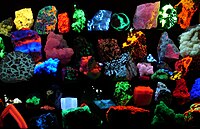
Photo from wikipedia
We present the synthesis, photophysical properties, and biological application of nontoxic 3-azo-conjugated BODIPY dyes as masked fluorescent biosensors of hypoxia-like conditions. The synthetic methodology is based on an operationally simple… Click to show full abstract
We present the synthesis, photophysical properties, and biological application of nontoxic 3-azo-conjugated BODIPY dyes as masked fluorescent biosensors of hypoxia-like conditions. The synthetic methodology is based on an operationally simple N=N bond-forming protocol, followed by a Suzuki coupling, that allows for a direct access to simple and underexplored 3-azo-substituted BODIPY. These dyes can turn on their emission properties under both chemical and biological reductive conditions, including bacterial and human azoreductases, which trigger the azo bond cleavage, leading to fluorescent 3-amino-BODIPY. We have also developed a practical enzymatic protocol, using an immobilized bacterial azoreductase that allows for the evaluation of these azo-based probes and can be used as a model for the less accessible and expensive human reductase NQO1. Quantum mechanical calculations uncover the restructuration of the topography of the S1 potential energy surface following the reduction of the azo moiety and rationalize the fluorescent quenching event through the mapping of an unprecedented pathway. Fluorescent microscopy experiments show that these azos can be used to visualize hypoxia-like conditions within living cells.
Journal Title: Journal of the American Chemical Society
Year Published: 2022
Link to full text (if available)
Share on Social Media: Sign Up to like & get
recommendations!